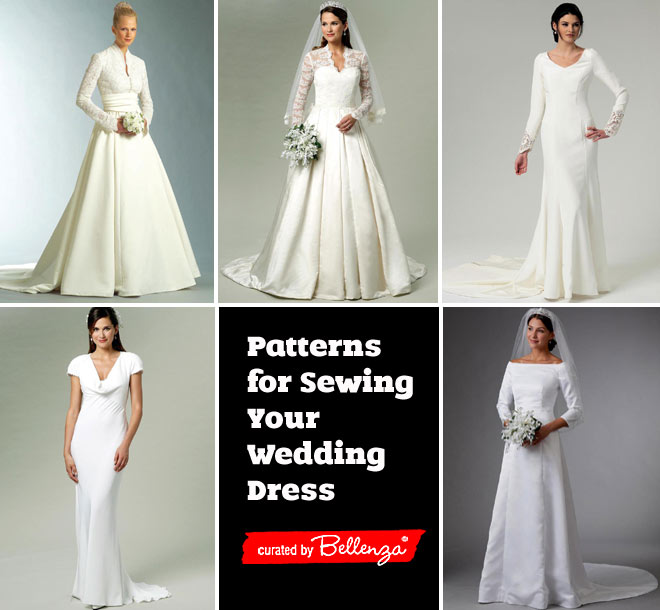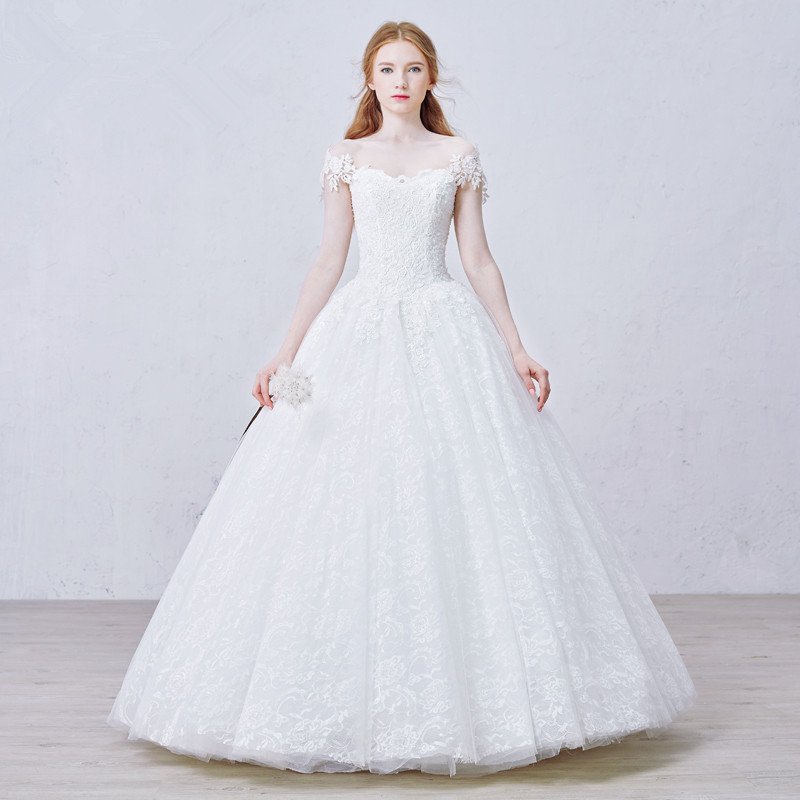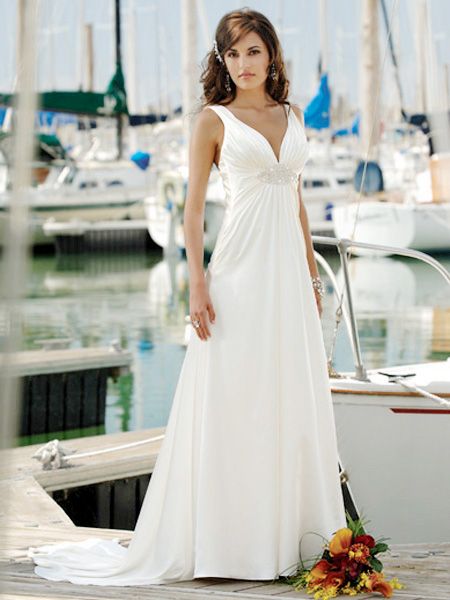Classic Wedding Dress Patterns:

- Ball Gown: Featuring a fitted bodice and a full, voluminous skirt, this silhouette creates a grand and elegant look.
- A-Line: A timeless and universally flattering style, with a fitted bodice that gradually widens into an A-shaped skirt.
- Mermaid: A figure-hugging design that accentuates the curves, flaring out at the knees into a dramatic tail.
- Trumpet: Similar to the mermaid, but with a more subtle flare from the hip or thigh.
- Sheath: A sleek and sophisticated style that follows the body’s natural lines, with a straight or slightly flared skirt.
Modern Wedding Dress Patterns:

- Asymmetrical: Dresses with unconventional shapes, such as one-shoulder or uneven hemlines, create a unique and contemporary look.
- Jumpsuit: A chic and alternative option, featuring a tailored bodice that flows into wide-leg pants.
- Separates: Mix and match a bodice and skirt to create a custom-tailored wedding ensemble.
- Boho: Free-flowing and ethereal styles, often featuring lace, embroidery, and flowing fabrics.
- Minimalist: Clean and simple lines, with a focus on high-quality fabrics and subtle embellishments.
Vintage Wedding Dress Patterns:

- Victorian: Intricate lace, high necklines, and long sleeves evoke the Victorian era’s romanticism.
- Gatsby: Flapper-inspired dresses with low waistlines, drop waists, and Art Deco embellishments.
- Edwardian: Delicate lace, high-necked bodices, and long, flowing skirts.
- Regency: Empire waistlines, soft fabrics, and intricate beading.
- Roaring Twenties: Short, drop-waisted dresses with beading and fringe.
Alternative Wedding Dress Patterns:
- Quilted: Dresses that incorporate quilted patterns into the fabric, creating a unique and textural look.
- Floral: Dresses adorned with vibrant or delicate floral prints, adding a touch of whimsy.
- Metallic: Dresses featuring metallic fabrics or embellishments, creating a glamorous and statement-making look.
- Paper Bag Waist: Dresses with a paper bag-style waistband, adding volume and a touch of playfulness.
- Puff Sleeves: Dresses with exaggerated or voluminous puff sleeves, creating a romantic and ethereal effect.## Wedding Dress Patterns
Executive Summary
Choosing the perfect wedding dress is a momentous task, and having a unique, custom-made gown can make the day even more special. This article delves into the world of wedding dress patterns, providing an extensive guide to help brides-to-be navigate the design and creation process, from understanding the different silhouettes to selecting fabrics and embellishments that reflect their personal style.
Introduction
The wedding dress is a symbol of love, commitment, and the start of a new chapter. Whether you envision a flowing A-line gown, a fitted mermaid silhouette, or a timeless ballgown, the right pattern will serve as the foundation for your dream dress.
FAQs
1. Where can I find wedding dress patterns?
- Bridal magazines
- Online pattern retailers
- Independent designers
2. What should I consider when choosing a wedding dress pattern?
- Body type
- Personal style
- Wedding theme and venue
3. Can I alter a wedding dress pattern to make it more unique?
- Yes, many patterns include instructions for basic alterations.
- More extensive changes may require a skilled seamstress.
Top 5 Wedding Dress Pattern Subtopics
Bodice Styles
- Sweetheart neckline: A flattering choice for many body types, creates a soft, romantic look.
- V-neckline: Elongates the silhouette, perfect for brides with a fuller chest.
- High neckline: Modest and elegant, often seen in traditional wedding gowns.
- Off-the-shoulder: Shows off the shoulders and décolletage, suitable for summer or beach weddings.
- Strapless neckline: Classic and timeless, requires careful fittings to ensure support.
Skirt Silhouettes
- A-line: Flowy and flattering, suitable for most body types.
- Ballgown: Full and voluminous, creates a princess-like appearance.
- Mermaid: Fitted bodice and flared skirt, accentuates curves.
- Sheath: Straight and narrow, elegant and minimalist.
- Tea-length: Falls just above the ankles, perfect for informal weddings or receptions.
Fabric Considerations
- Lace: Delicate and romantic, available in various patterns and weights.
- Satin: Luxurious and flowing, adds a touch of glamour.
- Chiffon: Airy and lightweight, perfect for flowy skirts and veils.
- Tulle: Soft and ethereal, often used for overskirts and veils.
- Organza: Crisp and structured, often used for ballgown skirts and bows.
Embellishments
- Beading: Adds sparkle and dimension, available in different colors and shapes.
- Lace appliqués: Intricate details that can enhance the neckline, bodice, or skirt.
- Embroidery: Adds texture and elegance, can feature intricate designs or floral motifs.
- Sequins: Reflective and eye-catching, can create a glamorous or playful effect.
- Crystals: Luxurious and sparkling, often used to add a touch of bling.
Construction Details
- Boning: Provides structure and support, especially in corsets and bodices.
- Invisible zippers: Hidden zippers that create a seamless look, suitable for fitted silhouettes.
- Button closures: Adds a decorative touch, often seen on the back or cuffs.
- Darts: Small tucks that shape and fit the fabric to the body.
- Seam allowances: Extra fabric around the edges of the pattern pieces, allows for adjustments and alterations.
Conclusion
Creating a custom wedding dress from a pattern requires skill, patience, and a keen eye for detail. By understanding the different components of a wedding dress pattern and considering your personal style and body type, you can create a gown that is uniquely yours and embodies the magic of your special day.
Keyword Tags
- Wedding dress patterns
- Bridal patterns
- Custom wedding gowns
- Dressmaking
- Bridal fashion






